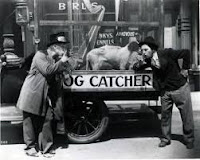 I call on every animal welfare individual, organization, group and association to stand together and simply say, post and remind everyone - we are all "no kill" - who isn't? Of course!
I call on every animal welfare individual, organization, group and association to stand together and simply say, post and remind everyone - we are all "no kill" - who isn't? Of course!
I saw an interview of one of the actors in The Handmaid's Tale, who was discussing new Georgia anti-abortion laws, as this show films in Georgia. She looked into the camera and said - "we are ALL pro-life. Who isn't?" (Serial killers excepted) She went on to discuss that we have to care for all life, i.e. the mother, the rape victim, the doctors, and, of course starving children and vulnerable populations everywhere so as not to be hypocritical. Is letting a mother die or killing a doctor pro-life? Of course not.
The question is not are we pro-life, (pro-choice people are pro-life too), but rather how are we treating life? What choices do we make so we ensure all a good quality of life and prevent suffering?
This is also a truth for those of us in the animal welfare business.
We are all "no kill". Whether one calls it Getting to Zero, Compassion Saves or Save Them All. The point is to rehabilitate and place all who can be into homes, and eliminate pain and suffering from those who can't be safely placed. To do so requires community trust, volunteers, legitimate rescue/help, and increased outlets for our pets to be seen. These terms have no rational opposite. It is ridiculous to think that we, an empathetic and compassionate people, who rally to help a stranded puppy, a homeless person, or a disaster victim on the other side of the world is anything but that.
Yet the ideologues, whether political, religious, or one-issue wonders, are rabid, disruptive, sometimes violent and never helpful. For example, telling children not to adopt a pet from an overcrowded pound, a place with the greatest need, because the shelter does not adhere to their definition of "no kill", leaves more pets not adopted as visitors are scared away. As ideologues never actually help, but rather holler nationally issued talking points and rehearsed propaganda, they leave those who work in the shelters and rescue groups, who really have dedicated their lives to tending to these pets, to do it all against a cacophony of insults. The ideologues are neither "no kill" nor are they advancing an animal welfare platform, but rather, they disrupt and demonize those who are. They divert people and treasure from doing their jobs. They actually cause the killing by this behavior.
They are the opposite of no kill.
Haruki Murakami, author of Kafka on the Shore, defined ideologues as "hollow people". People who fill up on talking points, lies, and anger with no independent thoughts or moral center. They fraternize in a gang like atmosphere with other hollow people who mirror each other's positions. Sadly, when they pair up with hollow politicians they can make some think that they are of people of substance. They are not. They are parrots rather than serious thinkers. They never do. They just yell at the people who do. They obey their cult leaders.
The good news is that we, actually, everyone else in the world are not hollow people. We brim with facts, empathy, science and a solid ethical core that leaves no room for toxic sputum. As we soothe and heal those who suffer, ideologues, the hollow people, criticize this help. It is not just shameful behavior, it is grifting, as their aim is to divert help from the needy to themselves, and deliver nothing in return. Think about it, by scaring people away from the shelters they perpetuate themselves. Fundraising is often a factor as well. In other words, they sustain the problem and their fundraising platform! This diverts funds from those need them most. Our homeless pets and those who tend them.
We are all pro-life and "no kill". We strive so that all may live a quality life. We must not invite or suffer the hollow people to fill spaces in which they can metastasize and ruin our good works.
Every animal shelter, public or private, and rescue organizations, is "no kill". Who Isn't? - Of Course!
 Thank you for all your support and confidence ...
Thank you for all your support and confidence ...














